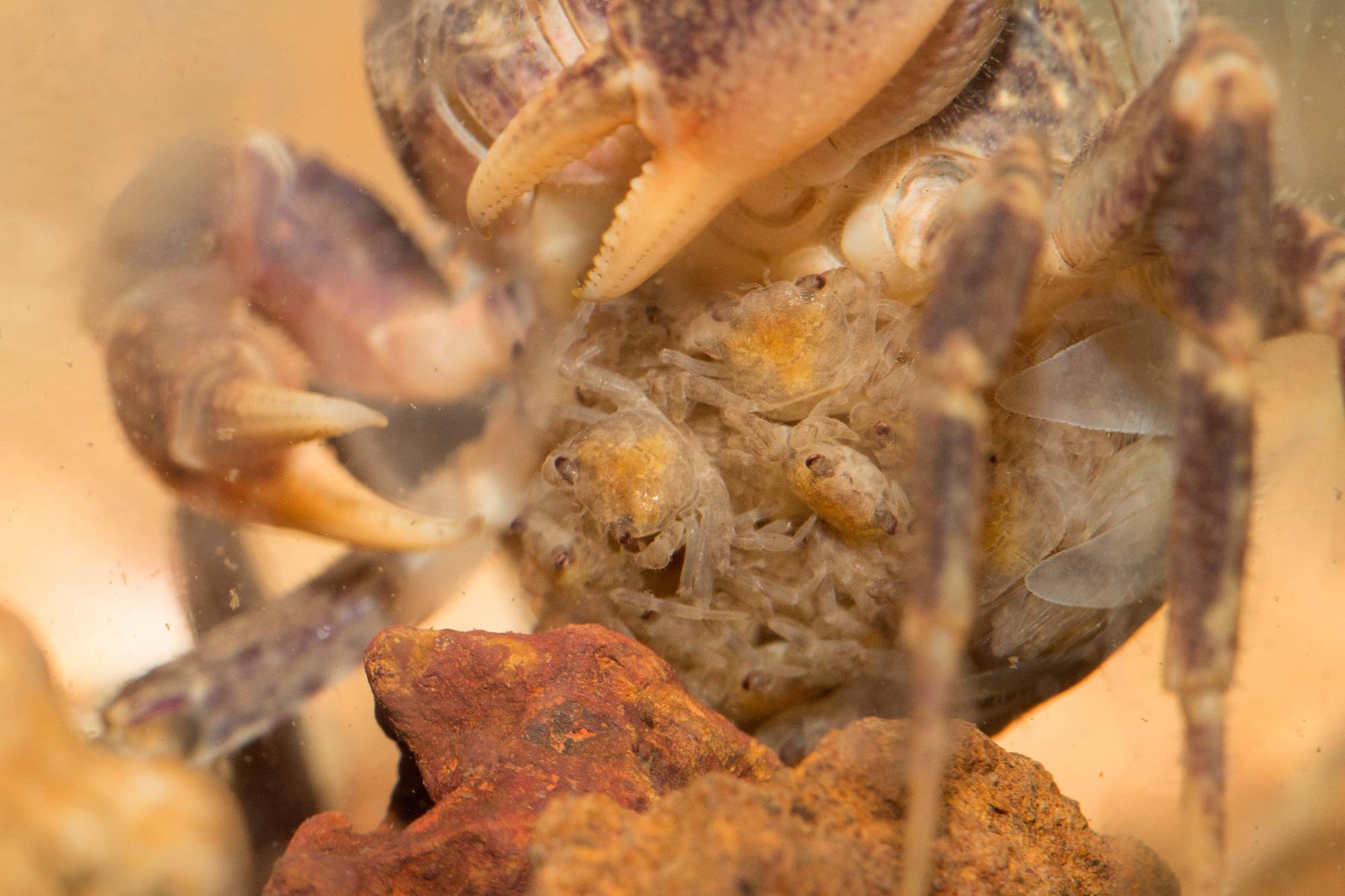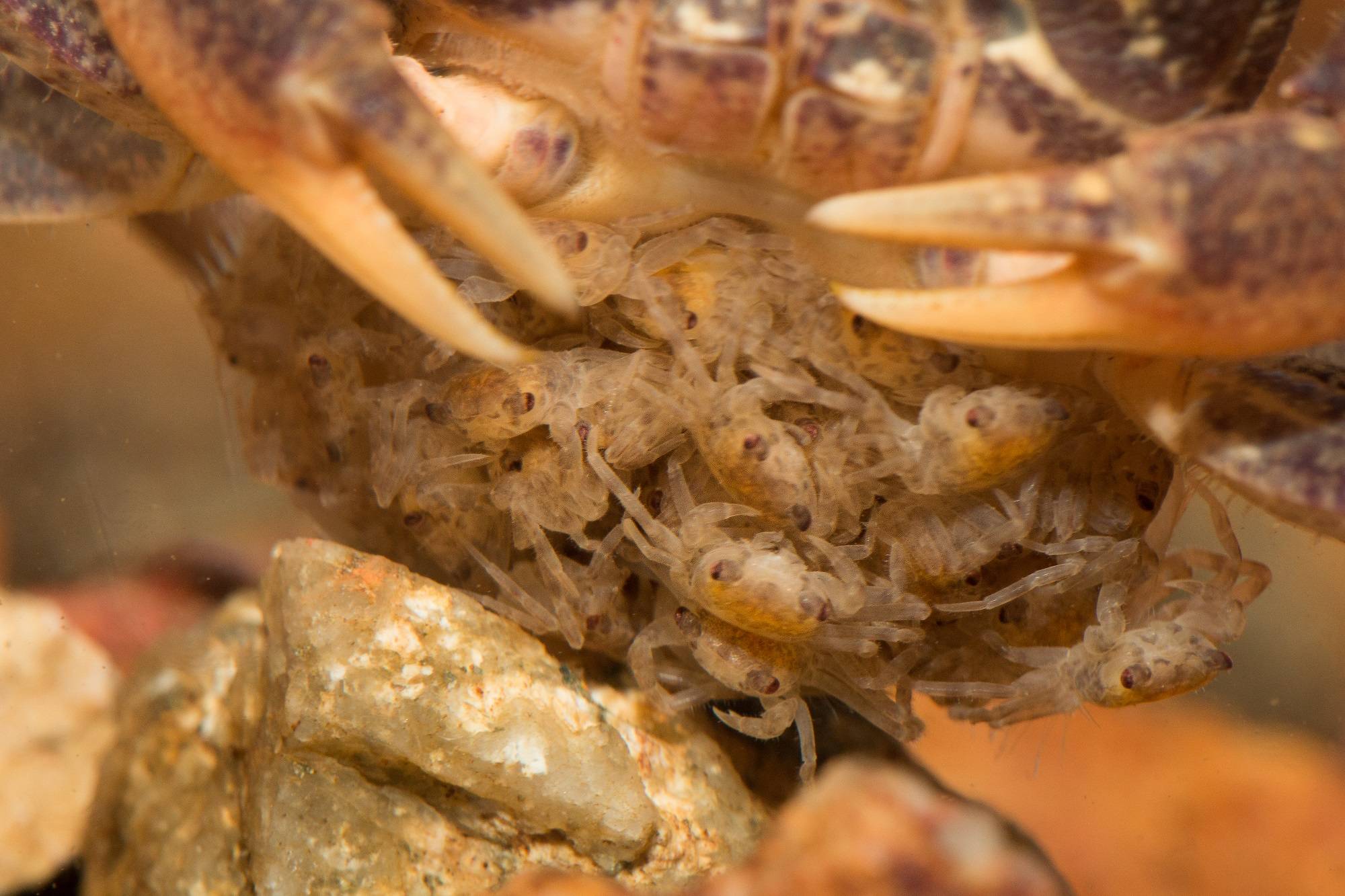Singapore
For the first time, Johora singaporensis crablets have been successfully hatched outside of their natural environment, as part of efforts to repopulate the critically endangered species
A Johora singaporensis crab carrying her crablets. (Photo: National Parks Board)
SINGAPORE: For the first time, Johora singaporensis crablets have been successfully hatched outside of their natural environment, as part of efforts to repopulate the critically endangered species.
Led by the Crab Working Group, which includes members from the National Parks Board (NParks), the National University of Singapore (NUS) and the Wildlife Reserves Singapore (WRS), the effort resulted in more than 40 crablets being hatched and subsequently growing into healthy juveniles.
They are the offspring of one pregnant female crab that was among a few of the crustaceans collected by researchers in December last year.
“If we manage to bring all these 40-plus crablets to full maturity, it will represent a fairly significant proportion of crabs out there in total,” said Mr Lim Liang Jim, group director of NParks’ National Biodiversity Centre.

A mother Johora and her brood. (Photo: National Parks Board)
Typically found in fast-moving streams in hills, the Johora singaporensis, commonly known as the Singapore Freshwater Crab, is one of three known species of crabs that can only be found in Singapore.
However, with researchers estimating the current adult population of the species to be in the hundreds, the pebble-sized freshwater crab is on the brink of extinction. The International Union for Conservation of Nature (IUCN) considers it critically endangered and among the 100 most threatened species worldwide.
To ensure the successful hatching of the eggs, researchers modified tanks to be similar to the crab’s natural habitat. This includes using water taken from the streams, as well as installing pumps to mimic the fast-flowing current and oxygen-rich water it lives in.
Additional measures, such as separating the crablets from each other as well as the mother crab, were also taken to increase their chances of survival. This is because Johora singaporensis are known to be a relatively aggressive species, with past cases of cannibalism and fights leading to death.

A brood of Johora singaporensis crablets. (Photo: National Parks Board)
With very little known about the species, researchers hope to learn more about the ecology and biology of the crabs by observing them. Going forward, the researchers will be looking at getting male and female crabs to mate and breed.
“Our ultimate aim is to build up the pool of specimens to where we can release and repopulate the wild population,” said Mr Lim.




